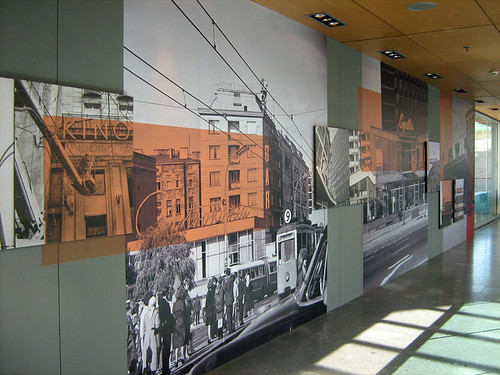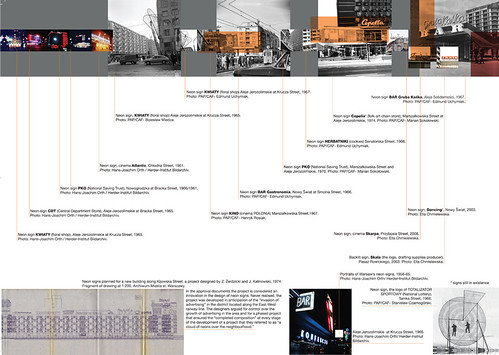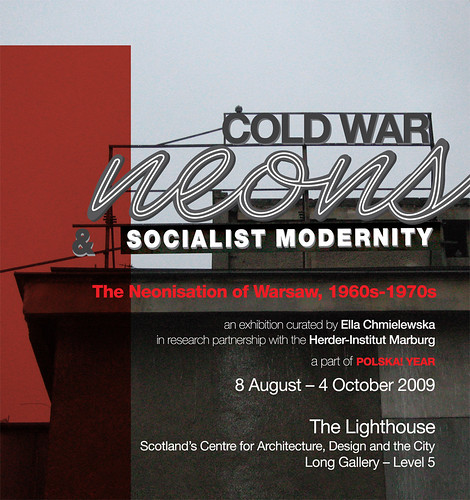Sunday, 3:27pm
27 September 2009
Neon lights
Design history
Graphic design
Photography
Reviews
Technology
Visual culture
A review of ‘Cold War Neons’, the final show at Glasgow’s Lighthouse

Curation is a highly context-sensitive undertaking, writes Sebastian Schmidt-Tomczak. Though Glasgow’s Lighthouse is about to close, the building is still open – with a distinct lack of activity on the lower floors. Yet the escalator journey to the top is rewarding: ‘Cold War Neons’, an exhibition of Warsaw’s neonisation programme of the 1960s and 70s is a delightful curatorial achievement.
The desire for modernisation in post-Stalin Warsaw introduced neons as part of an ideological urban choreography. Little is known about the true colours of the socialist city and black and white predominate in its image in the West. Ella Chmielewska’s exhibition – aptly described as a visual essay – enhances our understanding of socialist Warsaw and effortlessly redefines the meaning of ‘curation’.
Visual material is not simply selected and presented, but engaged and put in powerful relationships that are able to do justice to the neonisation programme they exhibit - by becoming a programme, too. However, where Warsaw’s neons state, those in Glasgow question. Through an adept appropriation of visual fragments as part of the design strategy, Warsaw is represented here as an important example of ideologically programmed modernisation.
Chmielewska’s curation gathers various surfaces and makes them speak to each other: The visuals present neons as integral parts of architectural planning (in blueprints of neonisation projects), as building prostheses during daytime (in black and white photographs of Warsaw’s press photographers), as communicative surfaces at night (in colour images by a German journalist, Hans-Joachim Orth), and as fragile objects of the socialist past (in Chmielewska’s own photographs). These are displayed on three adjacent walls.
The folding brochure (above), plus a computer kiosk and a digital display tucked away in a corner of the central wall give visitors access to more neon artwork and information – reminders of the extensive archival work that preceded the installation. Gathering material from Poland’s National Digital Archives, the City of Warsaw Archive and West German journalist Hans-Joachim Orth’s slides from the Herder Institute in Marburg, the show is an impressive example of visual research.
The fact that Chmielewska deploys a superb visual strategy for her curatorial project makes the closure of the Lighthouse even more lamentable. Here, the critical curation of visual material meets that of socialist urban design, in a space that has always valued such encounters.
Cold War Neons & Socialist Modernity. The Neonisation of Warsaw, 1960s-1970s, is on display in the Long Gallery, Level 5, at The Lighthouse, Glasgow, until 4 October 2009.
Eye is available from all good design bookshops and online at the Eye shop. For a taste of the magazine, try Eye before you buy.




